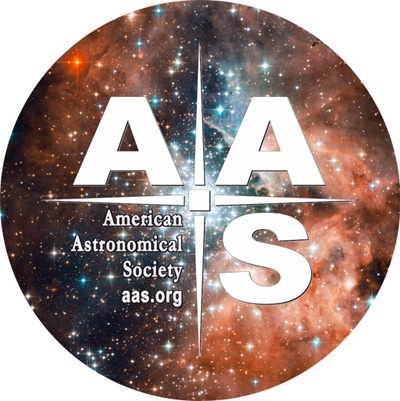16 March 2020
Susanna Kohler

This 2.5 x 2.5 arcminute image shows VCC 848, a compact dwarf galaxy that scientists think formed from the merger of two smaller galaxies. Click for the full view! [Adapted from Zhang et al. 2020]
What happens when the large-scale drama of a violent galaxy merger plays out on small scales for a pair of dwarf galaxies? New observations document the scene of a recent dwarf-galaxy collision.
Dramatic Encounters

The Antennae Galaxies are an example of a starburst galaxy with rapid star-formation activity driven by a recent merger. [NASA, ESA, and the Hubble Heritage Team (STScI/AURA)-ESA/Hubble Collaboration]
When two galaxies merge, the collision can have dramatic consequences — particularly if the galaxies are rich in gas. The gravitational interaction of galaxies oscillating during a merger drives shock waves through their gas. This can trigger bursts of star formation, launch jets from active galactic nuclei, and result in the eventual formation of a new galaxy with drastically different morphology than the original merging pair.
We’ve seen this drama play out on large scales between giant galaxies, but we know a lot less about what happens when dwarf galaxies collide. Dwarf galaxies are the most abundant type of galaxy in the universe, but they’re also very small and faint. This poses a significant challenge to finding and studying dwarfs — which means there’s a lot we don’t know about how the mergers of dwarf galaxies impact overall star formation and the shape of the new galaxy that forms in the collision.
Fortunately, we may now have an opportunity to learn more. In a recent publication led by Hong-Xin Zhang (University of Science and Technology of China), a team of scientists reports on the discovery of a small, compact galaxy formed by the collision of two dwarfs.

This g-band image of VCC 848 better shows the galaxy’s three extended shell-like structures (outlined with red arcs) surrounding the central body of stars. [Adapted from Zhang et al. 2020]
Feeling Shell-Shocked
VCC 848 is what’s known as a blue compact dwarf galaxy — a small galaxy that’s actively undergoing a burst of star formation. Located in the outskirts of the Virgo Cluster some 65 million light-years away, this little dwarf shows telltale signs of a recent merger: careful analysis reveals a complex set of three extended shell-like structures of stars around the bright stellar main body.
Shell structures — which, previously, had only been detected in larger galaxies — are known to be a signature of a recent minor or major galaxy merger; they are formed as the merger sends ripples through the galaxy and disrupts its structure. The detection of these shells in such a small galaxy provides evidence that we’re looking at the recent merger of two dwarfs.
A Flurry of Activity
Zhang and collaborators use their observations of VCC 848 — made with the MegaCam instrument on the Canada–France–Hawaii Telescope in Hawaii — to analyze the stars of the galaxy and learn more about its history.



They determine that the two dwarfs that collided were likely similar in mass to within a factor of a few, and the merger triggered a burst of star formation over the past billion years that was ~7–10 times higher than normal. This enhancement in star formation peaked near the center of the galaxy a few hundred million years ago, and it’s since declined; current star formation activity is primarily in VCC 848’s outer regions.
VCC 848 is just one of several blue compact dwarfs with hints of tidal shells that the authors uncovered in their survey, so there’s more data on the way! We have a lot more to learn about what happens when tiny galaxies collide.
Citation
“The Blue Compact Dwarf Galaxy VCC 848 Formed by Dwarf–Dwarf Merging,” Hong-Xin Zhang et al 2020 ApJL 891 L23.
https://iopscience.iop.org/article/10.3847/2041-8213/ab7825
See the full article here .

five-ways-keep-your-child-safe-school-shootings
Please help promote STEM in your local schools.

AAS Mission and Vision Statement
The mission of the American Astronomical Society is to enhance and share humanity’s scientific understanding of the Universe.
The Society, through its publications, disseminates and archives the results of astronomical research. The Society also communicates and explains our understanding of the universe to the public.
The Society facilitates and strengthens the interactions among members through professional meetings and other means. The Society supports member divisions representing specialized research and astronomical interests.
The Society represents the goals of its community of members to the nation and the world. The Society also works with other scientific and educational societies to promote the advancement of science.
The Society, through its members, trains, mentors and supports the next generation of astronomers. The Society supports and promotes increased participation of historically underrepresented groups in astronomy.
The Society assists its members to develop their skills in the fields of education and public outreach at all levels. The Society promotes broad interest in astronomy, which enhances science literacy and leads many to careers in science and engineering.
Adopted June 7, 2009
